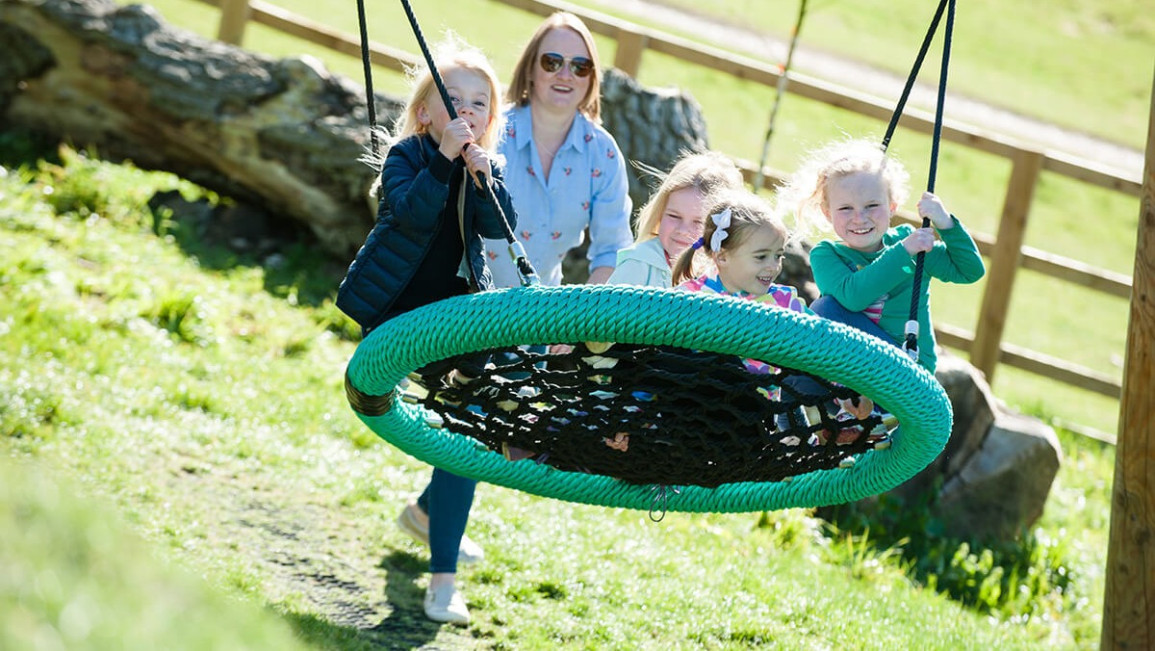Ideas and Insights
What is an inclusive playground?
Every child deserves a place to play. True inclusivity goes beyond meeting accessibility standards - it's about creating spaces where every child, teenager and adult feels welcomed, valued, and empowered to play together.
Inclusive playground design represents a fundamental shift in how we think about public play spaces. Whilst accessibility focuses on removing physical barriers, inclusion creates environments where diversity is celebrated and everyone can participate meaningfully in play.
At Timberplay, we believe that inclusion must be intentional, strategic, and community-specific. There is no one-size-fits-all solution.
Accessibility versus Inclusion: Understanding the Difference
Accessibility is about compliance and barrier removal. It ensures that people with disabilities can physically access and use playground equipment.
Inclusion goes further. It's about belonging and meaningful participation. An inclusive playground doesn't just allow access - it actively invites engagement from everyone. Children of all abilities can play together, not in segregated areas but as part of a cohesive play experience.
Strategic Approach to Inclusive Design
Effective inclusive playground design requires intentional planning:
- Physical Needs: Include equipment at multiple heights and difficulty levels. Our climbing stacks offer graduated challenges for children with varying motor abilities.
- Sensory Needs: Create balanced sensory environments with both stimulating elements and calm zones for children who become overwhelmed.
- Social Needs: Design spaces that encourage interaction. Activity tables and sand play areas create opportunities for children to play together regardless of ability.
- Age and Generational Diversity: Include challenging elements, social seating areas, and equipment designed for teenagers and older users.
Our award-winning playground at Pounds Park in Sheffield, UK demonstrates this beautifully. The open access walk-through approach, welcoming seating and good lighting at night, creates a space where teenagers, parents, and grandparents feel as comfortable as young children.

Intergenerational Play
Creating spaces for multiple generations to play together strengthens family bonds and builds community cohesion. We achieve this through equipment designed for older people - social seating clusters, gentle movement equipment for seniors, and activity tables where grandparents and grandchildren can engage together.
Case Study: Diana Princess of Wales Memorial Playground
One of the world's most iconic playgrounds, the Diana Princess of Wales Memorial Playground in Kensington Gardens, London has been welcoming over one million children every year since it opened in 2020.
With a bespoke pirate ship galleon at its heart, it has long been beloved for its imaginative play value. The park is undergoing a £3 million renewal by The Royal Parks charity, with work beginning in autumn 2025 and reopening planned for spring 2026. The renewal focuses on inclusive play so that children of all abilities can play together. The Royal Parks appointed Timberplay’s partner, Accessible UK to ensure the new Galleon ship and Treehouse Encampment will feature wheelchair-accessible spaces, whilst pathways will be widened to allow wheelchair users to move around more easily.
Watch our interview with Peter Heuken from Timberplay partner, Richter Spielgeräte as he reflects on originally building the Diana Princess of Wales Memorial Playground over 20 years ago, recalling how he personally sketched the iconic ship structure designed as a vessel for imagination, tilted and grounded to feel authentically embedded in the landscape. Now, Timberplay and Richter Spielgeräte are returning to renew this globally-referenced playground that has welcomed over one million visitors annually, working with The Royal Parks charity to ensure the space remains as magical and enduring as the original vision.
Beyond Compliance: The Training Gap
Most landscape architects receive training in accessibility compliance but very few receive training in inclusion principles. At Timberplay, we're committed to closing this gap through our CPD programme.
We partner with organisations like Accessible UK to ensure our approach is informed by lived experience. Our collaboration on the Thomas Playground concept demonstrates how consulting with disability advocates creates solutions we might never have imagined independently.
Key Principles for Inclusive Playground Design
- Co-locate challenges: Place equipment of varying difficulty levels near each other so children of different abilities can play alongside one another.
- Create choice: Offer multiple ways to access and engage with play elements.
- Design for dignity: Avoid designs that make disability conspicuous.
- Think beyond wheelchairs: Design for sensory, cognitive, and social inclusion.
- Remove barriers to presence: An unfenced, centrally located playground signals that everyone belongs
In conclusion
Inclusive playground design is not a checklist - it's a philosophy. At Timberplay, we're committed to moving beyond compliance to create playgrounds where every child can experience the joy, challenge, friendship, and growth that play provides.
EXPLORE OUR INCLUSIVE PLAYGROUND EQUIPMENT
